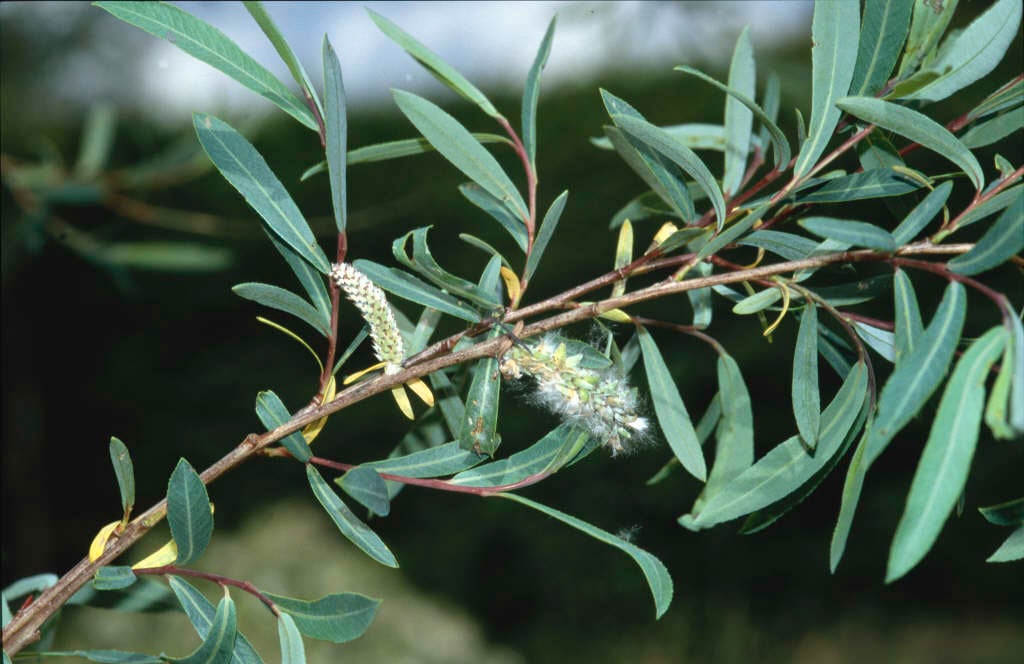Salix purpurea
purple willow
A spreading shrub or small tree to 5m, with arching purplish shoots bearing narrowly oblong, blue-green leaves and slender silvery catkins on bare shoots in early spring
Synonyms
Salix purpurea 'Helix'
Buy this plant
Size
Ultimate height
4–8 metresTime to ultimate height
10–20 yearsUltimate spread
2.5–4 metresGrowing conditions
Moisture
Moist but well–drained, Poorly–drainedpH
Acid, Alkaline, NeutralColour & scent
| Stem | Flower | Foliage | Fruit | |
| Spring | Grey Silver | Blue Green | ||
|---|---|---|---|---|
| Summer | Blue Green | Green | ||
| Autumn | Blue Green | |||
| Winter |
Position
- Full sun
Aspect
South–facing or North–facing or West–facing or East–facing
Exposure
Exposed or Sheltered Hardiness
H6Botanical details
- Family
- Salicaceae
- Native to GB / Ireland
- Yes
- Foliage
- Deciduous
- Habit
- Spreading branched
- Genus
Salix are deciduous shrubs and trees of diverse habit, with simple leaves and tiny flowers in catkins, male and female usually on separate plants. Some are valued for their brightly coloured winter shoots, others for their foliage or showy male catkins
- Name status
Correct
- Plant range
- Europe, C. Asia
How to grow
Cultivation
Grow in any deep moist well-drained soil in full sun. Dislikes shallow chalk soils
Propagation
Suggested planting locations and garden types
- Coastal
- Wildlife gardens
- Low Maintenance
- Hedging and screens
Pruning
Pests
May be susceptible to aphids, caterpillars, leaf beetles, sawflies, willow scale
Diseases
May be susceptible to willow anthracnose, scab, canker, honey fungus and rust
Love gardening
Sign up to receive regular gardening tips, inspiration, offers and more
View our Privacy Policy
Get involved
The Royal Horticultural Society is the UK’s leading gardening charity. We aim to enrich everyone’s life through plants, and make the UK a greener and more beautiful place.